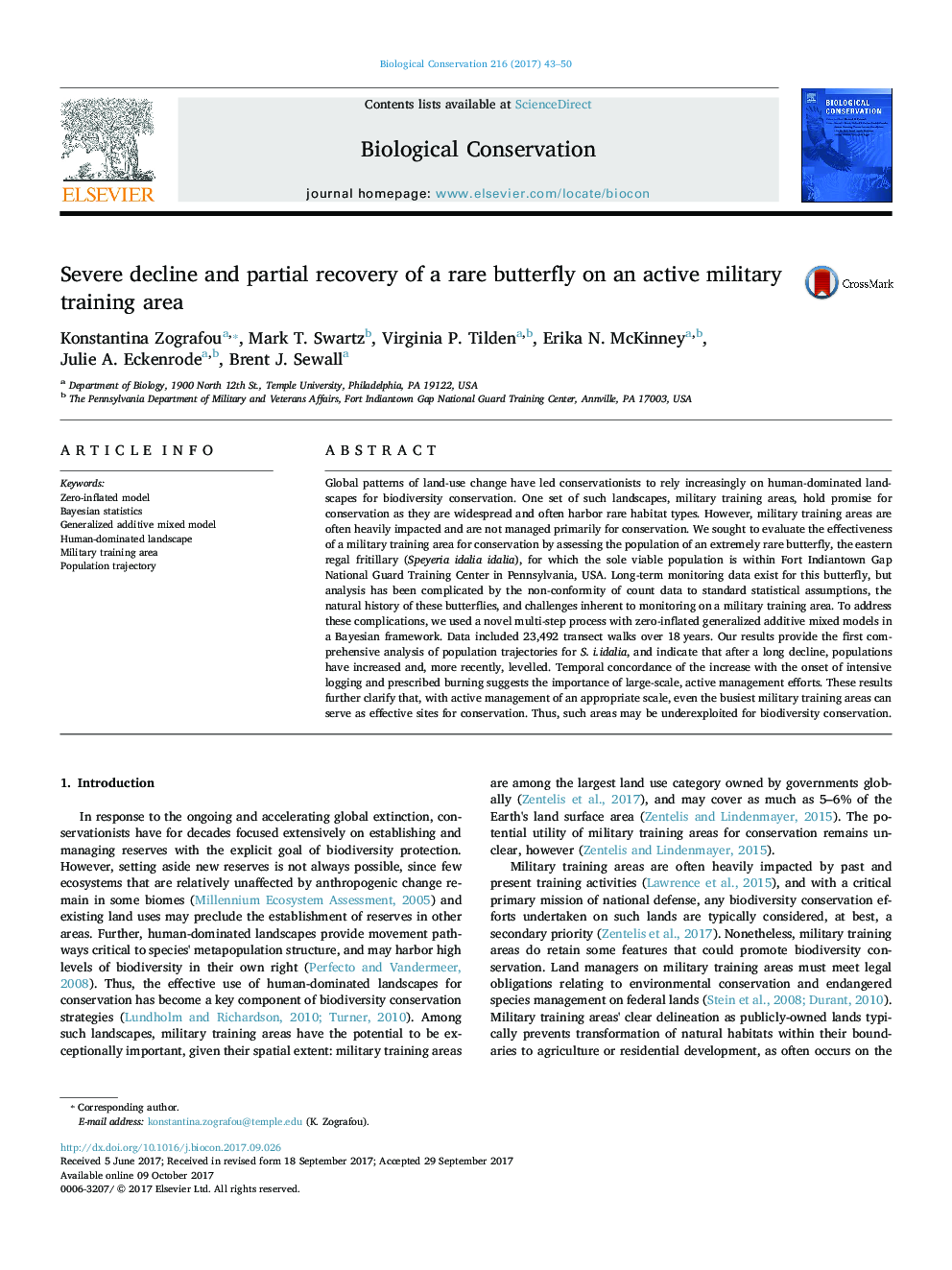| کد مقاله | کد نشریه | سال انتشار | مقاله انگلیسی | نسخه تمام متن |
|---|---|---|---|---|
| 5742898 | 1617889 | 2017 | 8 صفحه PDF | دانلود رایگان |
Global patterns of land-use change have led conservationists to rely increasingly on human-dominated landscapes for biodiversity conservation. One set of such landscapes, military training areas, hold promise for conservation as they are widespread and often harbor rare habitat types. However, military training areas are often heavily impacted and are not managed primarily for conservation. We sought to evaluate the effectiveness of a military training area for conservation by assessing the population of an extremely rare butterfly, the eastern regal fritillary (Speyeria idalia idalia), for which the sole viable population is within Fort Indiantown Gap National Guard Training Center in Pennsylvania, USA. Long-term monitoring data exist for this butterfly, but analysis has been complicated by the non-conformity of count data to standard statistical assumptions, the natural history of these butterflies, and challenges inherent to monitoring on a military training area. To address these complications, we used a novel multi-step process with zero-inflated generalized additive mixed models in a Bayesian framework. Data included 23,492 transect walks over 18Â years. Our results provide the first comprehensive analysis of population trajectories for S. i.idalia, and indicate that after a long decline, populations have increased and, more recently, levelled. Temporal concordance of the increase with the onset of intensive logging and prescribed burning suggests the importance of large-scale, active management efforts. These results further clarify that, with active management of an appropriate scale, even the busiest military training areas can serve as effective sites for conservation. Thus, such areas may be underexploited for biodiversity conservation.
Journal: Biological Conservation - Volume 216, December 2017, Pages 43-50
